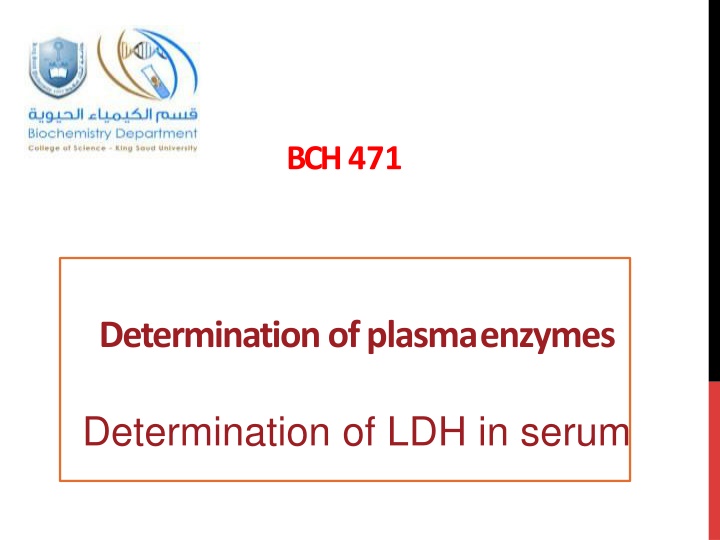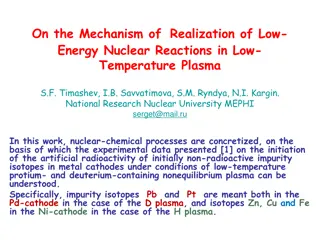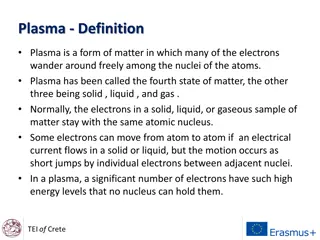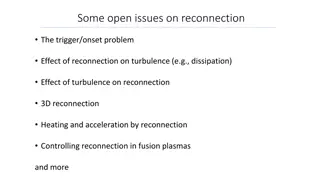
Understanding LDH and Plasma Enzymes in Diagnosis and Prognosis
Learn about the significance of measuring plasma enzymes, particularly lactate dehydrogenase (LDH), in diagnosing diseases, assessing tissue damage, and monitoring treatment outcomes. Explore the differences between functional and nonfunctional plasma enzymes, their sources, and medical importance.
Uploaded on | 1 Views
Download Presentation

Please find below an Image/Link to download the presentation.
The content on the website is provided AS IS for your information and personal use only. It may not be sold, licensed, or shared on other websites without obtaining consent from the author. If you encounter any issues during the download, it is possible that the publisher has removed the file from their server.
You are allowed to download the files provided on this website for personal or commercial use, subject to the condition that they are used lawfully. All files are the property of their respective owners.
The content on the website is provided AS IS for your information and personal use only. It may not be sold, licensed, or shared on other websites without obtaining consent from the author.
E N D
Presentation Transcript
BCH 471 Determination of plasmaenzymes Determination of LDH in serum
Objectives To determine the level of LDH in serum. To evaluate the presence of tissue damage.
Most clinical enzyme measurements using serum or plasma, occasionally other fluids, such as urine and gut secretions, are investigated. Plasma Enzymes Functional Plasma Enzymes Nonfunctional Plasma Enzymes Enzymes that are always present in the circulation and preform a function in the blood Enzymes that preforms no known function in blood
Differences of Functional and Nonfunctional plasmaenzymes Functional plasma enzymes Nonfunctional plasmaenzymes Always present in the blood Absent from the blood Their substrate Liver Different organs e.g. liver, heart, muscles, and brain Site of synthesis Decrease in liver diseases Different enzymes increase in different organ diseases ALT LDH Acid Phosphatase Amylase Effect of diseases Clotting factors Lipoprotein Lipase Examples
SourcesofNonfunctionalPlasmaEnzyme Cell damage with the release of its content of enzymes into blood e.g. Myocardial infarction and viral hepatitis Obstruction of normal pathways e.g. Obstruction of bile duct increases alkaline phosphatase Increase of the enzyme synthesis e.g. bilirubin increases the rate of synthesis of alkaline phosphatase in obstructive liver disease Increased permeability of cell membrane as in hypoxia
Medical Importance of Non Functional Plasma Enzymes Measurement of non functional enzymes is important for: Diagnosis of diseases Prognosisof the disease: following up of the treatment by measuring plasma enzymes before and after treatment.
Lactate Dehydrogenase(LDH) Lactic acid dehydrogenase (LDH) is an enzyme that helps produce energy. LDH is most often measured to evaluate the presence of tissue damage (diagnostic) The especially the heart, liver, kidney, skeletal muscle, brain, blood cells, and lungs. enzyme LDH is in many body tissues,
LDH Reaction LDH is a hydrogen transfer enzyme which catalyzes the interconversion of pyruvate and lactate with the mediation of NAD as hydrogen acceptor, eventually converting pyruvate to glucose. The optimum pH for lactate pyruvate (L P) reaction is 8.8 9.8 While for pyruvate to lactate (P L) is 7.7 7.8. The enzyme is inhibited by sulfhydryl reagents and mercuric ions.
LDH Isoenzyms LDH exists in 5 forms (isoenzymes), which differ slightly in structure. All of these isoenzymes can be measured in the blood, and can be separated by electrophoresis. isoenzyme Tissues LDH-1 is found primarily in heart muscle and red blood cells. is concentrated in while blood cells. is highest in the lung is highest in the kidney, placenta, and pancreas is highest in the liver and in skeletal muscle LDH-2 LDH-3 LDH-4 LDH-5
Diseases Examples Myocardial infarction Toxic jaundice Liver Disease Viral hepatitis LDH in plasma Obstructive jaundice Pernicious anemia Anemia Megaloblastic anemia Renal Diseases Tubular necrosis Pyelonephritis Malignant Disease Lung Cancer Hodgkin s disease
Method Tube 1 ml LDH reagent Pre-warm at 37 oC for 3 minutes and add 25 l Sample (serum) Mix and incubate at 37oC for 1 minutes, then read the absorbance at 340 nm against distilled water (blank) every minute for 3 minutes and determine A/min. 2) Applications Duration (180 sec = 3 min) (off) Press start (2 times) 2) Simple Kinetics wave length (340 nm) Intervals (60 sec= 1 min) 1) Seconds Print Data Table
Results Absorbance at 340nm Time(min) A1 1 A2 2 A3 3
Calculations A1, = A2 -A1 # A/min = ( A1 + A2) /2 A2 = A3 A2 L D H (U/L)= A x6592 NormalV alues 109 to 245U/L





















